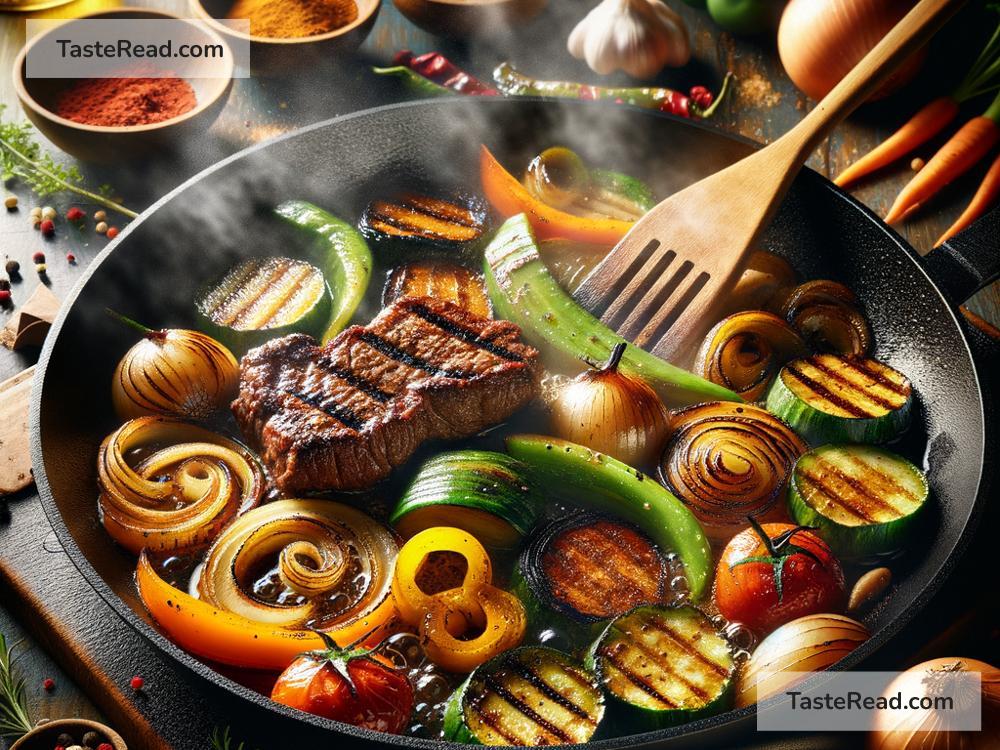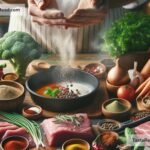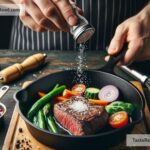The Science of Cooking with Chemical Persistence: Techniques and Tips
Cooking is more than just mixing ingredients and heating them up—it’s a fascinating science! Every time you cook, invisible chemical changes take place that transform raw ingredients into delicious meals. But did you know that some of the flavors and textures in food are all about “chemical persistence”? Don’t worry if this term sounds intimidating. It’s simpler than it sounds and understanding it can help you become a better, more confident cook. In this blog, we’ll break this down and explore some techniques and tips for using science to make your meals unforgettable.
What Is Chemical Persistence?
Chemical persistence refers to how the molecules in food stick around during cooking and interact with each other. These molecules determine flavor, texture, and aroma—and how long those qualities last in the dish. For example, think about how the taste of roasted garlic lingers longer than the taste of boiled garlic. That’s chemical persistence at work!
Certain cooking techniques can protect or enhance this persistence to bring out the best in your food. Whether it’s preserving nutrients, deepening flavors, or achieving perfect textures, knowing how ingredients behave chemically can revolutionize your approach in the kitchen.
Why Chemistry Matters in Cooking
Cooking is basically a science lab you can eat! When ingredients hit heat, react to acid or base environments, or mix with fats, their tiny molecules rearrange themselves to create flavors, smells, and textures we crave.
Here are some common chemical processes that happen in cooking:
-
Maillard Reaction: This magical browning process happens when proteins and sugars in food are heated, giving flavor-packed crusts to meats, breads, and even roasted vegetables.
-
Caramelization: Heating sugars changes their structure, creating rich, sweet, and nutty flavors found in desserts and sauces.
-
Protein Denaturation: When you cook eggs, meat, or fish, heat reorganizes the proteins, turning runny egg whites solid or raw meat tender.
-
Saponification in Fats: Cooking oils and fats interact with heat to unearth complex flavors (like butter sizzling in a pan).
-
Acid-Base Reactions: Using vinegar, lemon juice, or baking soda can change texture or flavor, like tenderizing tough meat or helping cakes rise.
These processes affect how ingredients persist during cooking, so understanding them helps you refine your technique for your desired result.
Techniques to Enhance Chemical Persistence
Now that you understand the science behind cooking, let’s focus on practical ways to use these processes to make your meals irresistible. Here are some techniques to enhance chemical persistence:
1. Master the Maillard Reaction
The Maillard reaction is key for flavor, whether you’re grilling, sautéing, or roasting. To maximize this, you need dry heat and high temperatures. Here’s a tip: Pat ingredients dry before cooking to get the perfect browning. For meats, sear them first for a flavorful outer crust, then cook them slower to finish.
2. Caramelize Like a Pro
Caramelization happens best at steady, medium heat. If the heat’s too high, the sugars can burn. Practice caramelizing onions by letting them cook slowly without stirring too much. The patience pays off with sweet, golden results.
3. Understand Protein Cooking
Proteins are delicate; they’ll turn rubbery if overcooked. For tender chicken or juicy fish, aim for a gentle cooking method like poaching or steaming to carefully rearrange the proteins without drying them out. Rest cooked meat before serving to allow juices to redistribute evenly.
4. Utilize Acids and Bases
Acids like lemon juice or vinegar brighten flavors and tenderize meat. For example, marinate chicken in yogurt for juicy, flavorful results. Conversely, bases like baking soda are perfect for making light, airy textures in cakes or crispy coatings for fried foods.
5. Control Heat Levels
Chemicals behave differently at different temperatures. Cooking at medium heat lets flavors develop slowly without risking burnt or bitter flavors. Use high heat for quick reactions when searing, but low heat for slow-cooked masterpieces (think stews).
Tips to Preserve Flavors and Textures
Here are some bonus tips for getting the most out of your cooking:
-
Don’t overcrowd your pan: When foods release moisture, filling your pan with too much food can prevent caramelization or browning. Give your food space to develop flavor!
-
Season at the right time: Salt draws out moisture from proteins, so for things like steak, season right before cooking, not too early, to avoid tough textures.
-
Use fresh ingredients: Chemical persistence works best when your base ingredients still have their natural properties intact. Always aim for the freshest produce, proteins, and fats.
-
Taste as you cook: Flavors change as chemicals shift. Regularly tasting your dish lets you adjust seasonings for the most balanced final flavor.
-
Cook with enthusiasm! Science in cooking isn’t hard—it’s an adventure. Don’t be afraid to experiment with different methods.
Conclusion
Cooking with chemical persistence isn’t about memorizing complicated reactions—it’s about paying attention to how heat, moisture, acids, and bases change your food. Once you grasp these fundamental processes, you can control flavors, textures, and aromas to create deeply satisfying dishes. Next time you step into your kitchen, look at it as your personal science lab. Remember, a little chemistry can go a long way toward making your meals unforgettable. So go ahead—experiment, learn, and taste your way to success!


